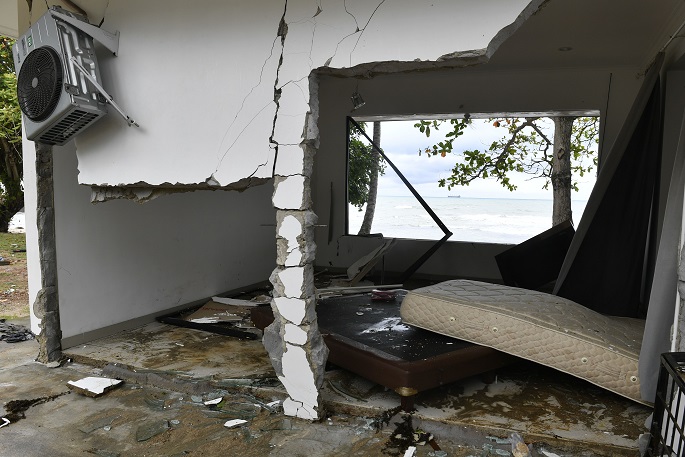Indonesia's tsunami death toll rises to 222
Published : 23 Dec 2018, 11:47
Updated : 23 Dec 2018, 18:31
The death toll from a volcano-triggered tsunami in Indonesia rose to 222 with at least 843 others injured, the disaster management agency said on Sunday.
The eruption of the Anak Krakatau volcano, or Child of Krakatoa volcano in English, sparked underwater landslides at 21:27 Jakarta time (14:27 GMT) on Saturday, leading to the rise of the sea level, according to the meteorology and geophysics agency.
The tsunami destroyed 556 houses, nine hotels and 360 ships in the district of Pandeglang, the hardest hit area, as well as Serang of Banten province and Lampung Selatan district of Lampung province, spokesman of national disaster management agency Sutopo Purwo Nugroho said.
Heavy machinery equipment has been deployed in the catastrophe-hit areas to help with search and rescue operation, said Sutopo.
Many residents and tourists were forced to flee, but the spokesman did not give specific numbers, saying that evacuation centers are being set up.
"The figures are looked to rise as the recurrent risk assessment has not reached all affected areas," he told a press conference on Sunday.
In the hardest-hit Pandeglang district, huge waves rattled residential areas and several tourist spots along the coastal area, such as Pantai Tanjung Lesung, Sumur, Penimbang, Teluk Lada and Carita, Sutopo said.
"When the tragedy occurred, many people were spending their time along the coastal areas of Pandeglang," he added.
Thirty-three bodies were recovered in Pandeglang district alone, with 491 others injured and 409 houses and hotels damaged, said Sutopo.
The water submerged the area with a height of four to five meters, leaving scores of people missing, head of emergency department of disaster management agency in the district Endang Permana said.
"Many people were missing, they were swept by waves when they were watching a performance in coastal area," Permana told Xinhua over phone.
The eruption of Child of Krakatoa volcano triggered landslides at the sea bed that led to the tsunami, which was emboldened by the effect of full moon, head of the meteorology and geophysics agency Dwikorita Karnawati said.
"We predicted that the impact could be directly or indirectly. There was a possibility of landslides under the sea bed," she told a press conference on Sunday.


